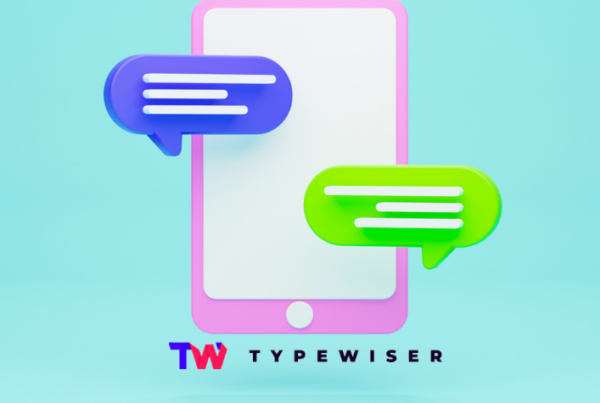Remember when software just… sat there? You clicked buttons, filled forms, and it did its job. Useful, sure, but not exactly intelligent. That era is fading fast. Today, software is getting a major upgrade, thanks to two powerful forces joining hands: Software as a Service (SaaS) and Artificial Intelligence (AI).
 Think of SaaS as the way we get software now – delivered over the internet, usually with a subscription, like your favorite streaming service. It’s flexible, scalable, and you don’t need a degree in computer science to use it. Then there’s AI, the science of making machines think and learn like humans, especially a part of it called Machine Learning (ML).
Think of SaaS as the way we get software now – delivered over the internet, usually with a subscription, like your favorite streaming service. It’s flexible, scalable, and you don’t need a degree in computer science to use it. Then there’s AI, the science of making machines think and learn like humans, especially a part of it called Machine Learning (ML).
AI-Powered SaaS was created by fusing these two together. It’s not just software anymore; it’s intelligent software. Imagine your apps not just responding to your clicks, but anticipating your needs, learning your habits, and even making smart suggestions. That’s the story we’re diving into.
So, What Exactly Is AI-Powered SaaS?
At its heart, AI-Powered SaaS is cloud-based software with a brain. Instead of just following instructions, it uses AI to perform complex tasks. Here’s the breakdown:
- Cloud Power: Like regular SaaS, it lives online. This is crucial because AI needs a lot of data and computing power, and the cloud provides that playground, letting it scale up or down as needed.
- Machine Learning Magic: This is the core intelligence. ML algorithms learn from data to spot patterns, make predictions, personalize experiences, and automate tasks.
- Data is Fuel: AI-SaaS thrives on data. It analyzes information to understand what’s happening, figure out what might happen next, and continuously improve itself.
- Smart, Scalable & Accessible: These tools can grow with a business’s needs. Plus, you don’t need your own team of AI wizards to use them; the SaaS provider handles the complex stuff.
- Always Getting Better: The software and the AI models within it are constantly updated, meaning users always get the latest and greatest features without lifting a finger.
Think of it like upgrading from a basic car to a self-driving one. Both get you places, but the AI-powered one uses sensors (data) and intelligent systems (ML) to navigate, adapt to traffic, and make the journey smoother and smarter.
AI is Woven into Your Software
So how does AI technically work inside SaaS applications? It’s not just one trick; ML is being used in several clever ways:
- Automation: AI is great at taking over repetitive, time-consuming tasks. Think automated data entry, report generation, or even initial customer support chats handled by smart chatbots. This frees up humans for more creative and strategic work. In sales tools (CRMs), AI can automatically score leads, telling salespeople who to focus on.
- Personalization: Ever wonder how Netflix just knows what movie you’ll like? That’s ML!. AI analyzes your past behavior – what you watch, click, or buy – to tailor recommendations, content, and even the app’s interface just for you. Marketing messages become more relevant, and shopping sites suggest products you might actually want. This makes the software feel like it truly understands you.
- Data: By analyzing historical data, ML can make accurate predictions about the future. It can forecast sales trends, predict which customers might be thinking of leaving (customer churn), or even anticipate market shifts. This helps businesses make smarter, proactive decisions.
- Enhanced Analytics: AI can chew through massive amounts of data way faster than any human, spotting hidden patterns and insights. For example analyzing customer feedback for sentiment or providing real-time dashboards showing how a business is performing. This leads to better, data-driven strategies.
- Smarter Search & Talking Software: AI helps search functions understand what you mean, not just what you type. And with voice commands and conversational interfaces becoming common, AI lets you interact with software more naturally, just by talking.
Essentially, AI isn’t just adding features; it’s making the software itself more intuitive, helpful, and insightful.
AI in Disguise
 AI-powered SaaS isn’t some far-off future dream; it’s already here, working behind the scenes in many tools businesses use daily.
AI-powered SaaS isn’t some far-off future dream; it’s already here, working behind the scenes in many tools businesses use daily.
- Customer Relationship Management (CRM): Tools like Salesforce Einstein, HubSpot, Zoho CRM (with Zia), and Creatio use AI to score leads, forecast sales, automate emails, and even generate marketing content. The goal? Help sales and marketing teams work smarter and build stronger customer connections.
- Marketing Tools: Platforms like Adobe Experience Cloud, Mailchimp, Jasper, and HubSpot Marketing Hub leverage AI for creating personalized ad campaigns, writing marketing copy, optimizing content for search engines (SEO), and automating outreach. AI helps marketers target the right people with the right message at the right time.
- Human Resources (HR): AI is streamlining HR tasks. Tools from companies like SC Training, Deel, ClearCompany, Eightfold.ai, Workday, and BambooHR use AI for creating training courses, parsing resumes, matching candidates to jobs, analyzing employee engagement, and even managing global payroll compliance.
- Analytics Powerhouses: Tools like Tableau, Snowflake, Qlik, and Google Analytics 4 use AI to process huge datasets, visualize trends, predict outcomes, and deliver real-time insights, helping businesses make faster, smarter decisions.
- Cybersecurity Guardians: In a world of increasing cyber threats, AI is a crucial defender. Platforms from Microsoft, SentinelOne, Darktrace, CrowdStrike, and Perception Point use AI to detect threats faster, analyze suspicious activity, automate responses, and predict potential attacks.
Here’s a quick glimpse:
| Industry | Example Platforms | How AI Helps |
| CRM | Salesforce, HubSpot, Zoho CRM | Smarter lead scoring, sales forecasting, automation |
| Marketing | Adobe, Mailchimp, Jasper, Surfer SEO | Personalized campaigns, content creation, SEO boost |
| HR | Workday, Deel, Eightfold.ai, SC Training | Recruitment automation, training, payroll, insights |
| Analytics | Tableau, Snowflake, Google Analytics | Faster insights, trend prediction, data visualization |
| Cybersecurity | Microsoft, SentinelOne, Darktrace | Threat detection, automated response, risk analysis |
Why AI in SaaS is a Big Deal
Integrating AI brings a wealth of benefits, making life easier for both the people using the software and the companies providing it.
For Users:
- More Time, Less Grind: AI automates the boring stuff, freeing us up for more important, creative, or strategic tasks.
- Smarter Choices: With AI providing data-driven insights and predictions, we can make better, more informed decisions.
- Software That Gets You: Personalized experiences make software feel more intuitive and relevant to our specific needs, leading to greater satisfaction.
- Help Before You Ask: AI can sometimes predict problems before they happen or offer instant help via chatbots, making support less frustrating.
For the SaaS Providers:
- Happier, Stickier Customers: Better experiences and proactive support lead to increased customer loyalty and retention.
- New Ways to Shine (and Earn): Advanced AI features can become premium offerings, creating new revenue streams.
- Smoother Sailing: Automating internal processes saves providers time and money, making their operations more efficient.
- Building Better Products: Analyzing how people use the software helps providers improve it in ways customers will actually appreciate.
- Standing Out from the Crowd: Offering cutting-edge AI features gives providers a competitive edge in a busy market.
Challenges on the AI-SaaS Quest
Integrating AI into SaaS comes with its own set of hurdles:
- Data Privacy & Security: AI needs loads of data, including personal information. Protecting this data and complying with rules like GDPR is a massive responsibility. Using unapproved “Shadow AI” tools can also create risks.
- Bias: If the data used to train AI is biased (reflecting societal prejudices), the AI can make unfair or discriminatory decisions. Ensuring fairness is critical, especially in areas like hiring or finance.
- The “Black Box” Problem: Sometimes, it’s hard to understand why an AI made a particular decision. This lack of transparency can erode trust.
- Need for AI Experts: Building and managing AI requires specialized skills (data scientists, AI engineers) which can be hard to find and expensive to hire.
- Integrations: Making AI play nicely with existing software systems can be technically tricky and costly.
- The Cost Factor: Developing and running AI isn’t cheap, involving costs for R&D, infrastructure, and talent.
- Legality: The laws around AI are still evolving, requiring companies to stay vigilant about compliance.
- Ethical Questions: Broader ethical concerns loom, like how much autonomy AI should have, the need for human oversight, and even the environmental impact of running powerful AI models.
What’s Next for AI in SaaS?
The AI-SaaS journey is just getting started. Here’s what the future might hold:
- Smarter AI “Agents”: Imagine AI that doesn’t just respond but takes initiative! Agentic AI could autonomously manage workflows, make decisions, and achieve goals with minimal human input. Think AI assistants that truly assist.
- Hyper-Personalization: Experiences will become even more tailored, with AI understanding user needs at an incredibly granular level.
- Deeper Learning: More advanced ML techniques will enable AI-SaaS to tackle even more complex problems.
- Focus on Ethics & Governance: As AI becomes more powerful, ensuring it’s used responsibly, fairly, and transparently will be paramount.
- Cyber Security: AI will become even more critical in defending SaaS platforms against increasingly sophisticated cyber threats.
Traditional SaaS vs. AI-Powered SaaS
Let’s quickly compare the old way (Traditional SaaS) with the new (AI-Powered SaaS):
| Feature | Traditional SaaS | AI-Powered SaaS |
| Functionality | Core features, often manual | Enhanced features, prediction, personalization, automation |
| User Experience | Mostly static, one-size-fits-all | Dynamic, adaptive, personalized to each user |
| Data Handling | Stores data, requires manual analysis | Analyzes data automatically, provides insights |
| Automation | Basic, rule-based | Advanced, learns and adapts workflows |
| Value | Cost savings, accessibility | Adds efficiency, better decisions, new capabilities |
| Complexity | Lower development complexity | Higher complexity, needs AI expertise |
| Cost | Simpler subscription models | Potentially more complex/higher costs |
The Next Chapter: Software’s Intelligent Future
We’re moving from software that simply does things to software that thinks, learns, and adapts. AI-Powered SaaS is making our digital tools more efficient, more personal, and incredibly powerful.
While challenges remain, the potential benefits are enormous. By embracing AI thoughtfully and responsibly, businesses can unlock new levels of innovation and create software experiences that truly feel intelligent. The future of software is here, and it’s smarter than ever.
Ready to put intelligent software to work for your writing?
At Typewiser, we’ve built an AI-powered writing mentor that learns from the best, adapts to your tone, and helps you craft clear, compelling content—faster. Whether you’re drafting a proposal, a report, or just need to get unstuck, Typewiser has your back.




